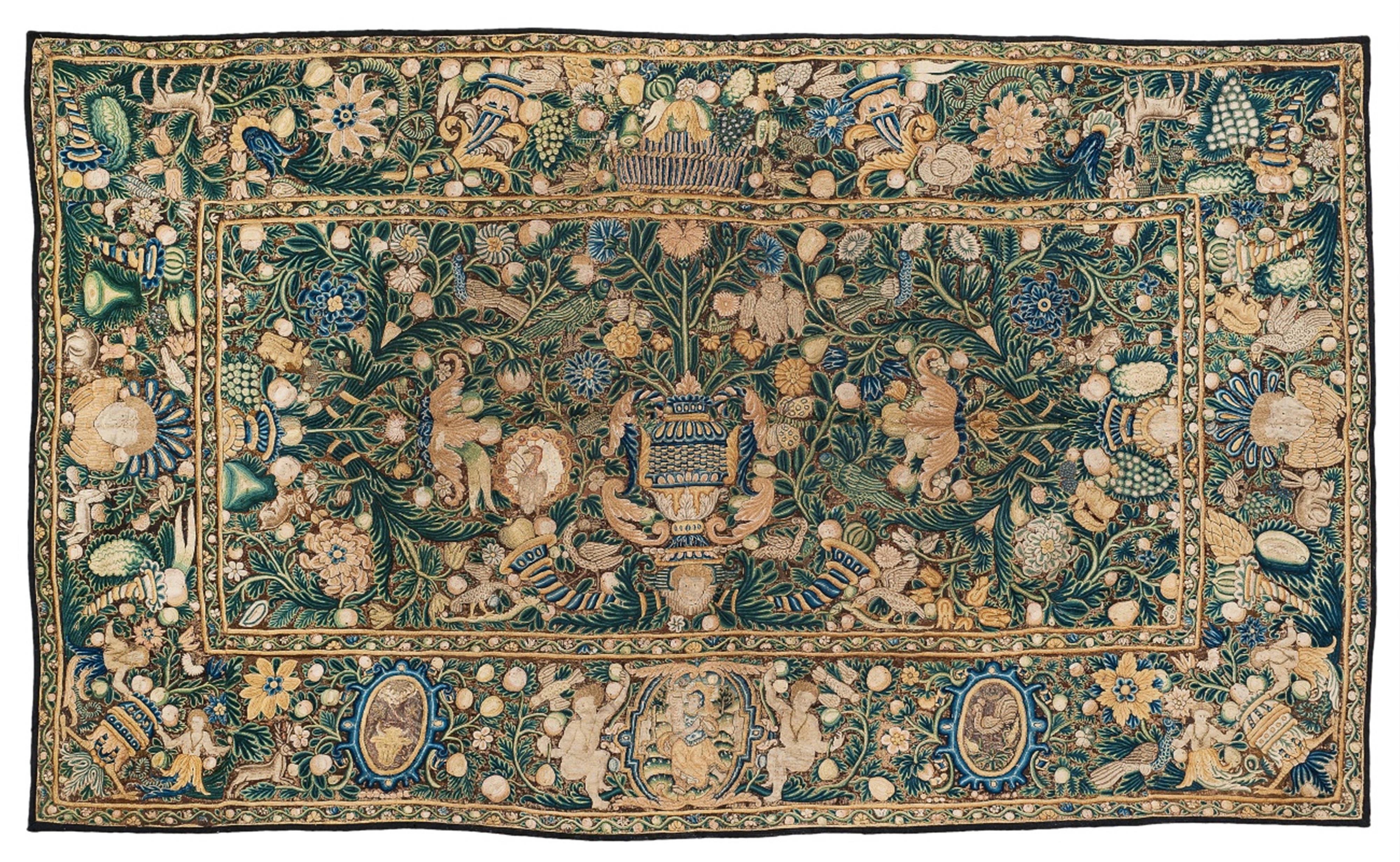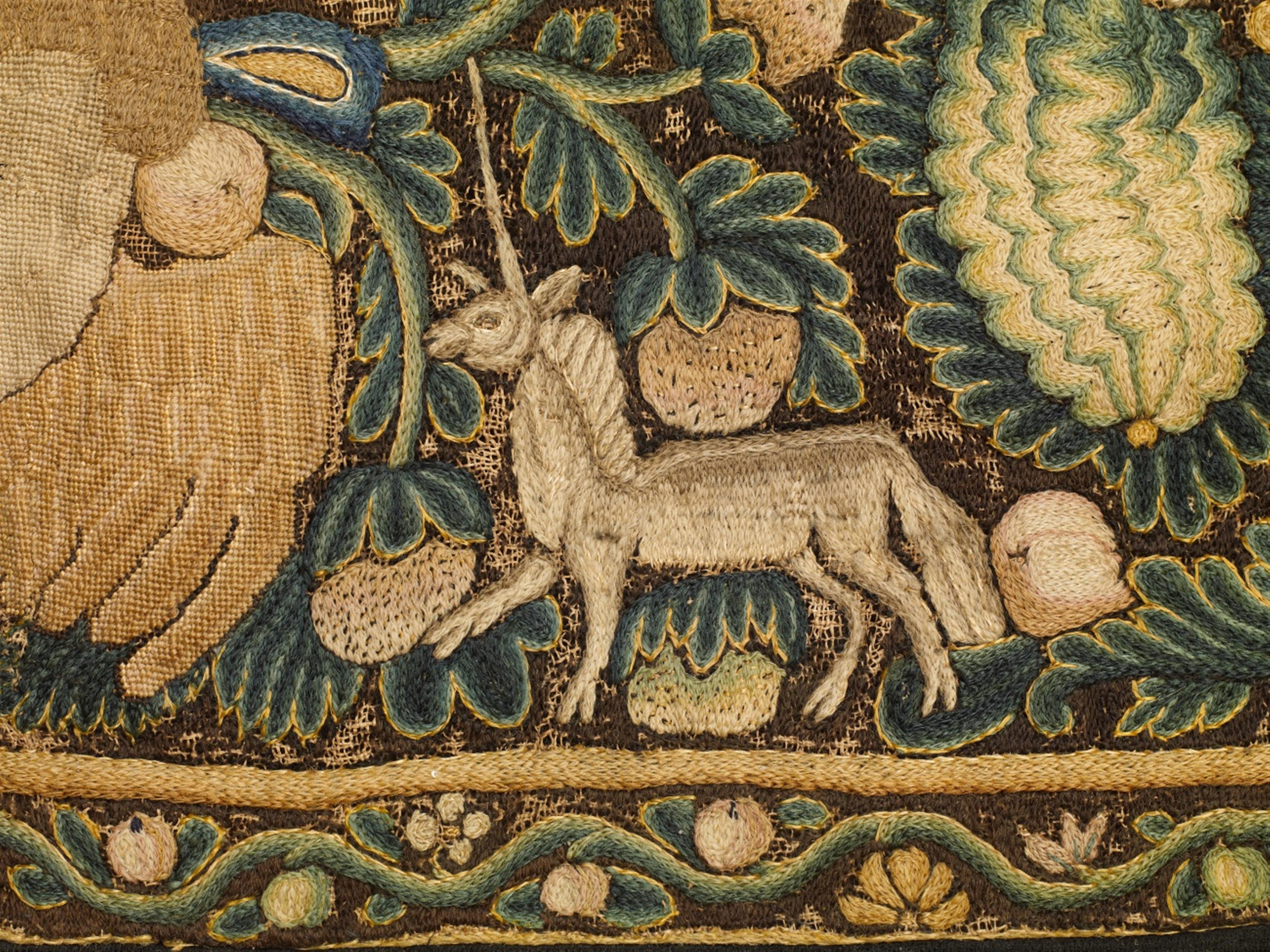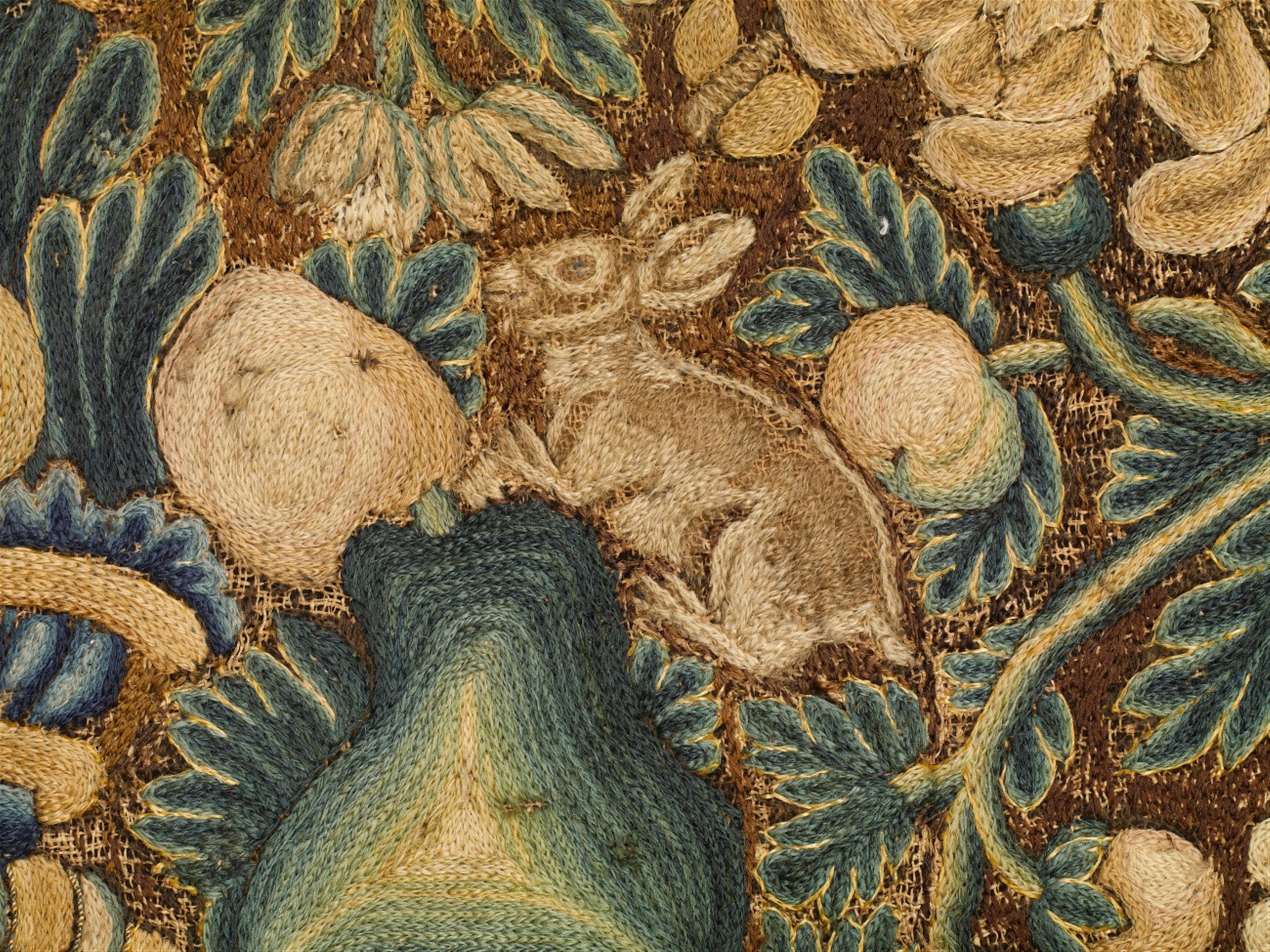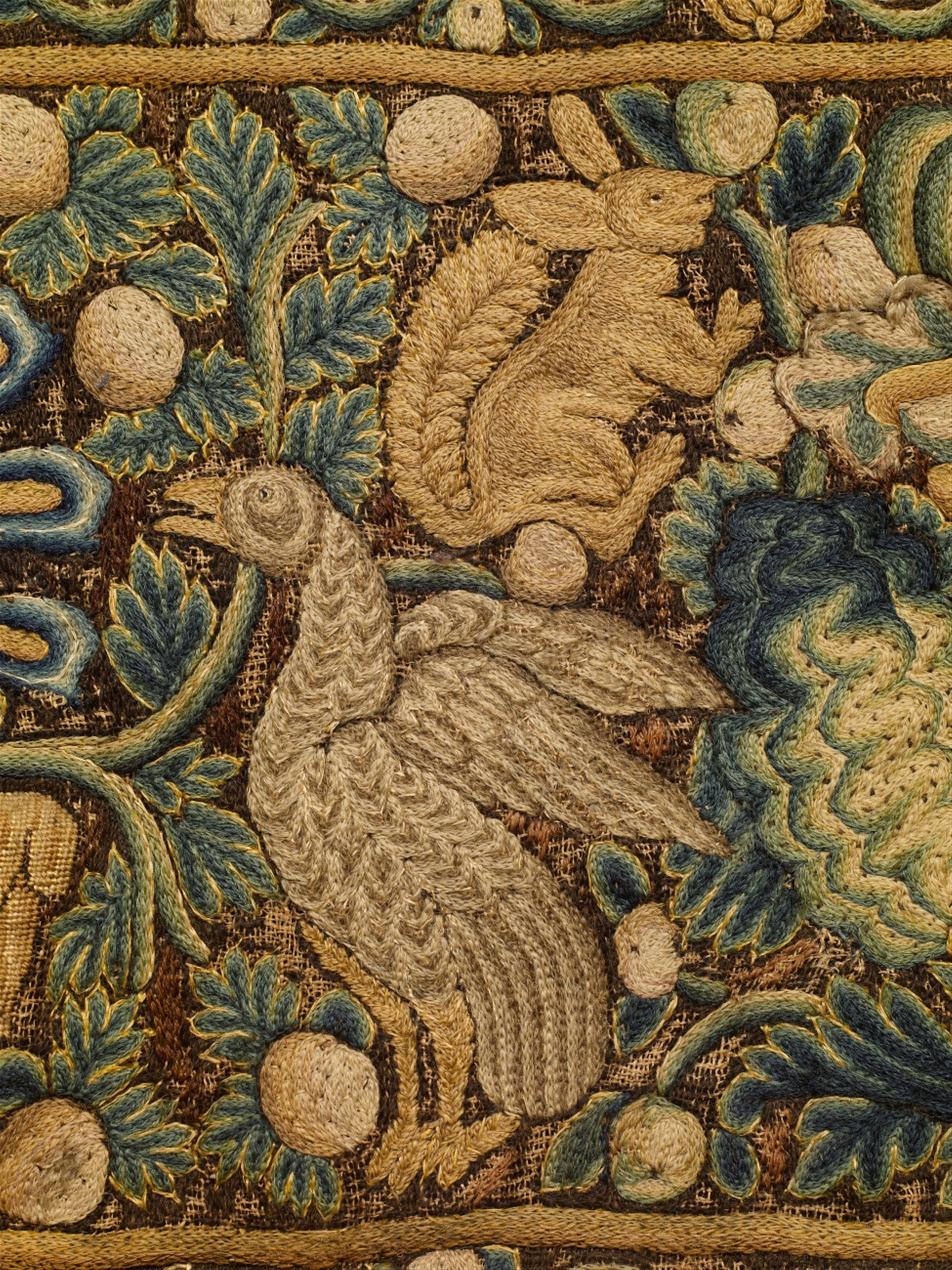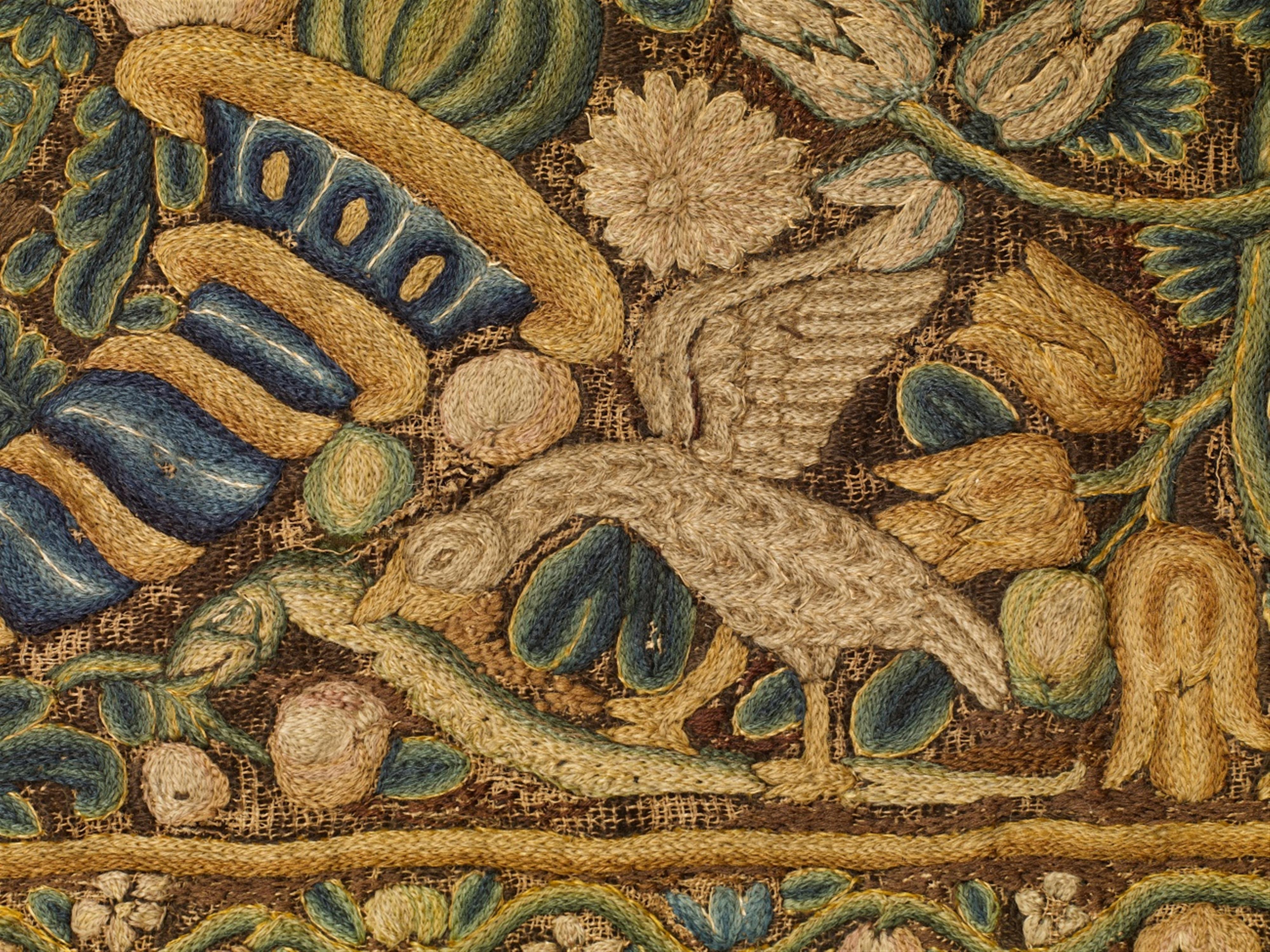A 17th century embroidered table cover
Petit point, satin stitch embroidery in wool, silk and metallic threads on canvas. With later tapestry borders. Backed with linen. A very finely stitched, almost symmetrical depiction of a vase amid dense tendril décor inhabited by various animals, including an owl, parrot, pheasant, peacock, hare, stag, unicorn and two birds picking at worms. The tapestry-like borders with three cartouches to the lower edge, the central reserve possibly with an allegory of Fortitudo. Horizontally trimmed to the upper and lower borders. Minor losses and older repairs, some small holes. 128 x 213 cm.
England or Netherlands.
Seventeenth century embroidered panels of this size preserved in their entirety are exceedingly rare. Several smaller pieces with primarily biblical motifs are kept in the Victoria and Albert Museum in London. The present work places more emphasis on decorative effect than on figural depiction, and the foliate design is reminiscent of late medieval millefleurs tapestries. The animals and plants may all carry symbolic or allegorical connotations, the meanings of which are difficult to decipher today, making it also hard to infer the original function of the piece. A similar but earlier panel in the V&A in London is simply referred to as a “hanging” (inv. no. T.125-1913), and another similar piece in the Metropolitan Museum of Art in New York, dated to around 1600, is listed as a table cover (accession no. 35.80.52). The dimensions of this panel and its compositional similarities to Netherlandish table carpets, such as those in the Rijksmuseum, both speak for this function. A common motif of these works are botanically accurate scattered flowers. Apart from their capacity to conjure up the illusion of eternal summer, the flowers also lent themselves to allegorical interpretation. However, in place of a meadow, the present work depicts a lush, exotic wilderness similar to the kind commonly depicted in wall hangings. Thus, we can assume that the unknown embroiderer of the piece was acquainted with contemporary Flemish tapestries. The finely preserved condition of the cloth, showing only minor wear and amendments, indicate the respect and care with which this exceptional object has been treated throughout the ages.

